Guest blog by: Lauren Divine and Veronica Padula; Aleut Community of St. Paul Island, Ecosystem Conservation Office
Historically, the tribal community of St. Paul Island, Alaska, would walk the shorelines of our island to remove debris, such as driftwood and animal bones from the beaches, ensuring that the summer homes of laaqudan, or Northern Fur Seals, were clean and accessible. Over half of the world’s population of Northern Fur Seals gather on our shorelines to breed during the summer, and these clean-up efforts were part of how the community of St. Paul served as stewards and protectors of the seals. More recently, rocky and sandy shorelines alike have become the constant end points for man-made debris such as plastic fishing nets and lines, and cleanups have become more difficult because of the increasing volume of debris without a corresponding increase in local capacity to effectively respond. As a result, the community has continued to find innovative solutions to the marine debris issue, thus conserving the habitat of our cherished wildlife.
Observations of marine debris and the entanglement impacts it causes in the Pribilof Islands date back to the 1980s. Since 1998, the Aleut Community of St. Paul Island (ACSPI) Ecosystem Conservation Office (ECO) has organized and conducted shoreline marine debris cleanups in order to mitigate negative impacts to wildlife, such as laaqudan (in Unangan) or Northern Fur Seals (Callorhinus ursinus), endangered qawan or Steller Sea Lions (Eumetopias jubatus), isuĝin or Harbor Seals (Phoca vitulina), and millions of san or seabirds. Over the past two decades, cleanups have been possible due to strong partnerships and funding support from the NOAA Marine Debris Program, Central Bering Sea Fishermen’s Association, Ocean Conservancy (OC), City of St. Paul, Sitka Sound Science Center, and Trident Seafoods, Inc.
One such partnership was during the 2019 cleanup with Ecosystem Conservation Office, Ocean Conservancy, and Ocean Media Institute (OMI), who put a new spin on tackling marine debris issues impacting St. Paul Island, Alaska. A new campaign called “Marine Pollution to Community Solution,” amplified the critical perspectives of our underrepresented community and combined marine debris removal with a hands-on, storytelling and film production camp. As part of this project, St. Paul Island’s youth captured the impact of marine debris on the ecosystem and learned about the importance of being stewards of their home. The first two days of clean-up activities were coordinated for youth participation during their last days of school. The larger clean-up crew, including Ecosystem Conservation Office staff, 11 local community members, and three Ocean Conservancy staff, tackled thousands of yards of rocky shorelines and sandy beaches that comprise Northern Fur Seal critical breeding and resting habitat in areas that are most vulnerable to accumulated debris.
Now in our 22nd year of clean-up efforts, 2020 marks a significant milestone for Ecosystem Conservation Office. Starting in 2020, the Aleut Community of St. Paul Island and the Traditional Council of St. George Island, with the support of a NOAA Marine Debris Program Removal Grant, will partner with local city governments, fishing associations, the local fish processing plant, the Alaska Maritime National Wildlife Refuge and Ocean Conservancy to initiate a community-driven and collaborative project that builds off of previous work. In 2020, these organizations will coordinate clean-ups for the first time in the Pribilof Islands. This will be the first marine debris removal effort on Otter Island and the first effort to transport debris off St. George Island. Local community members from St. Paul and St. George will work to clean local beaches by identifying areas with the highest debris concentrations and areas that pose the highest threat to marine mammals on the islands. Local community members from St. Paul will use small unmanned aerial systems to conduct aerial surveys to monitor the effectiveness of marine debris clean ups along the shorelines after clean-ups occur. A new on-island initiative will encourage local fishing fleets to reuse derelict buoys. All collected debris will be sorted and recycled through partnerships with Net Your Problem and Plastix Global. Any remaining gear will be backhauled by Trident Seafood, Inc. for recycling off-island.
Engaging, informing, and educating community members are important components of this project. Presentations and project progress will be shared during annual tribal membership meetings. Video and multimedia content will be created and shared through the Aleut Community of St. Paul Island’s social media pages that are frequented by tribal and community members, and the general public. In-person marine debris learning activities will be offered at annual school district events and will build upon the existing knowledge base of the community’s youth and young adults.
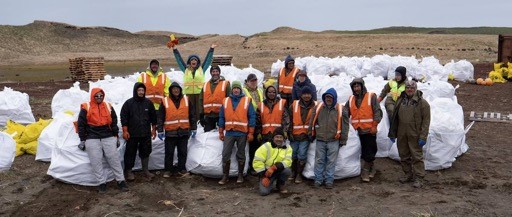

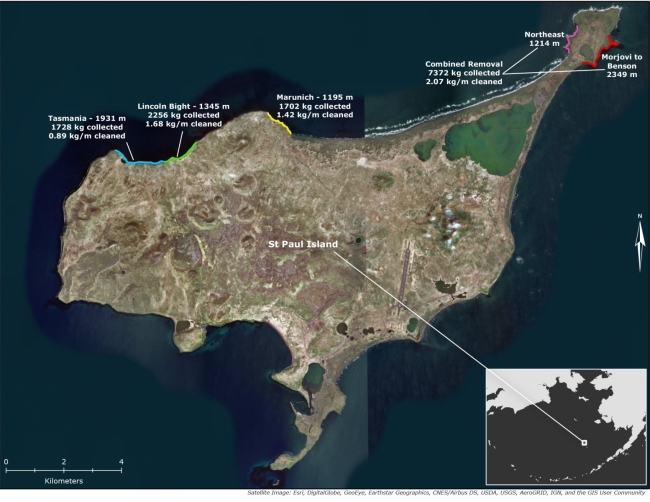
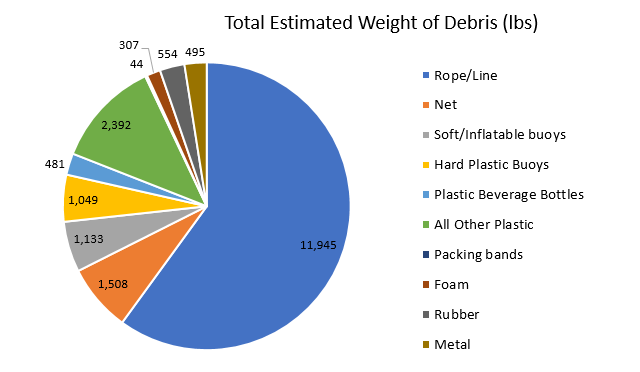
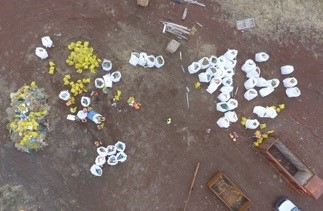
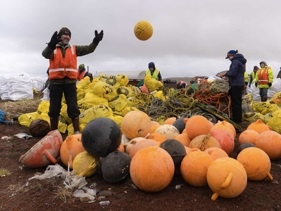
Blog.marinedebris.noaa.gov